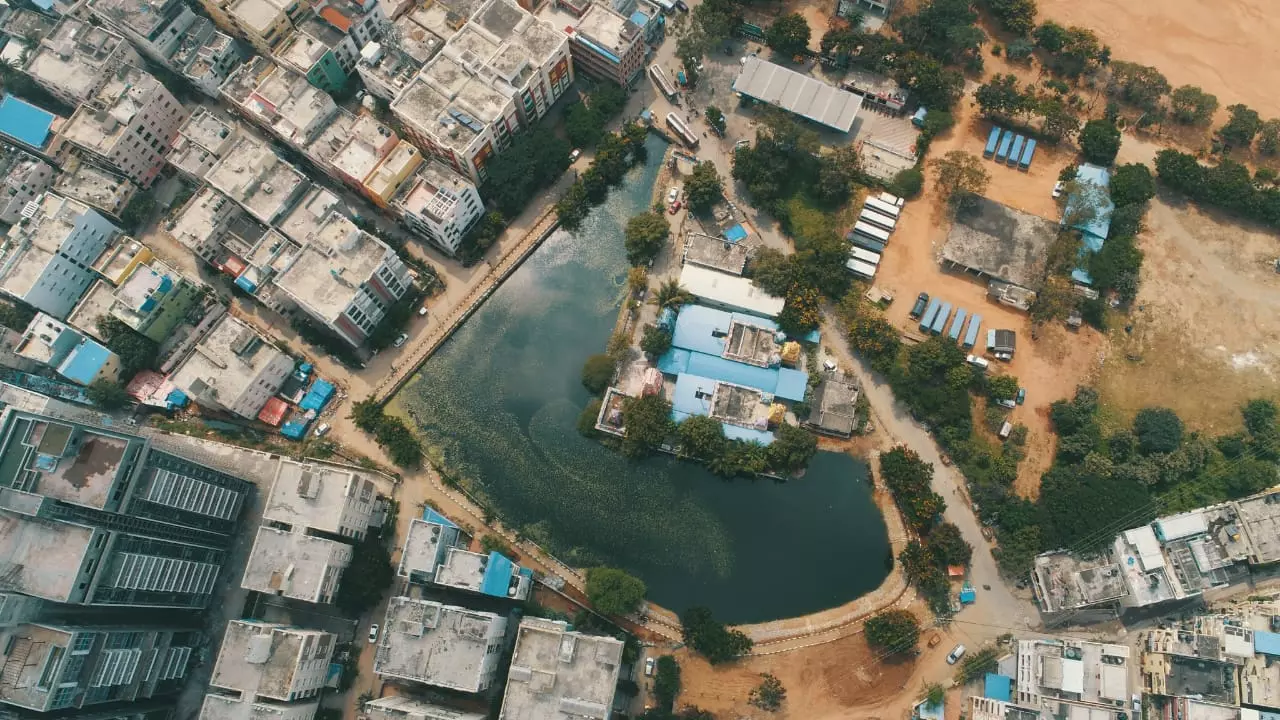Restoration of Ranganna Kunta lake is a lesson for rest of Hyderabad
Ranganna Kunta lake will be thrown open to visitors on 7th November, 2020.
By Coreena Suares
Hyderabad: The aftermath from the unprecedented rainfall recorded in mid-October this year that devastated many parts Hyderabad continues to disrupt people's lives. The city, which was once known for its ample water bodies, witnessed mayhem when the lakes breached their borders and flooded lands which once belonged to them.
A cluster of colonies remained submerged till the end of October as water refused to recede, pointing fingers at the largescale illegal habitations that sprouted within the full tank levels (FTLs) of the lakes. To name a few, popular lakes such as Sunnam Cheruvu, Gurram lake, Mir Alam tank and Musi river inundated colonies and destroyed lives during the off-season rains.
But they are exceptions. Hanuman Nagar in Kondapur falling under Serilingampally circle of GHMC, faced less inundation and stood as a stellar example to the rest of Hyderabad.
In 2019, the vibrant Lake Protection Committee of local residents of Jagruthi Colony approached the then west zone GHMC commissioner D. Hari Chandana Dasari with an appeal to restore the Ranganna Kunta Lake spread across two acres. The colony was facing mosquito menace, foul smell, increased population of stray dogs and pigs which had turned into a nuisance. The society also reported a high number of dengue cases.
Then a city-based NGO, United Way of Hyderabad that helps in restoring lakes came forward to help the RWA. Wasim Akhtar, project lead at Environmental Initiatives was already working on the restoration of Khajaguda lake and Barla Kunta in Gachibowli.
Speaking to NewsMeter about his year-old journey restoring the Ranganna Kunta, he said, "The team was already engaged in restoring two other lakes when Ranganna Kunta came to us. But it needed equal attention. To begin with, we connected various stakeholders and a lake mobilisation drive was initiated by corporate companies. A team from GE-India stepped forward to take up lake cleaning and later on they agreed to restore it as part of its Corporate Social Responsibility initiative. The support of the vibrant RWA played a significant role."
The first step towards restoration began on the 14 November 2019, when the RWA and GE-India team took up a cleanliness drive with the support of the GHMC.
The team worked on removing debris, garbage, floating material and temple waste. Desilting operation was initiated including the cleaning of stormwater drains and the catchment area. A separate drive to remove algae was held.
The colony faced a flood-like situation in 2019 despite less monsoon when the lake water flooded inhabitation.
Wasim added, "In phase one, 20 tonnes of plastics and 10 tonnes of debris were removed, a walking track of 330m with play equipment for children was created and 3,500 saplings of 26 varieties were planted. The existing stormwater drains were desilted and more channels were created. As part of the lake protection, the Jagruthi Colony RWA began a door-to-door awareness programme. It educated people not to throw garbage in the lake area and plant saplings. The commercial outlets within the area was also involved. The RWA carried out numerous lake cleaning drives on weekends."
As funds began to flow in, a pathway was created to give visitors a recreational feeling.
"A fencing was created around the temple there. Another external fencing was established around the lake to avoid further encroachments. The NGO was backed by the lake protection committee of community volunteers (Jagruthi Team) who has taken the responsibility of sustenance of the project by maintaining it with GHMC support."
The restoration of the 2 acres lake was divided into three aspects with funding contributed by the Lake Protection Committee of local residents(25%) and CSR(75%). Their focus was on improving water quality, enriching biodiversity and community ownership.
Restoration included.
1.The first activity was to clear the jungle, works began. The total area cleared was 1500 sq meters.
2. A total of 10 tonnes of dry plastic and other floating material were removed from the lake
3. Approximately 20 tons of stone debris were removed
4. 436 sq mts of stone pitching was carried out across the bund area to avoid soil erosion
5. De-silting to the permissible extent was carryout out to increase the water storage capacity of the lake.
6. In-let storm water channel and 7 M-10 slopes were constructed to direct entry to run off the water into the lake
7. A walking track of 320 m lenghth with an average width of 2 m was laid all around the accessible periphery of the lake